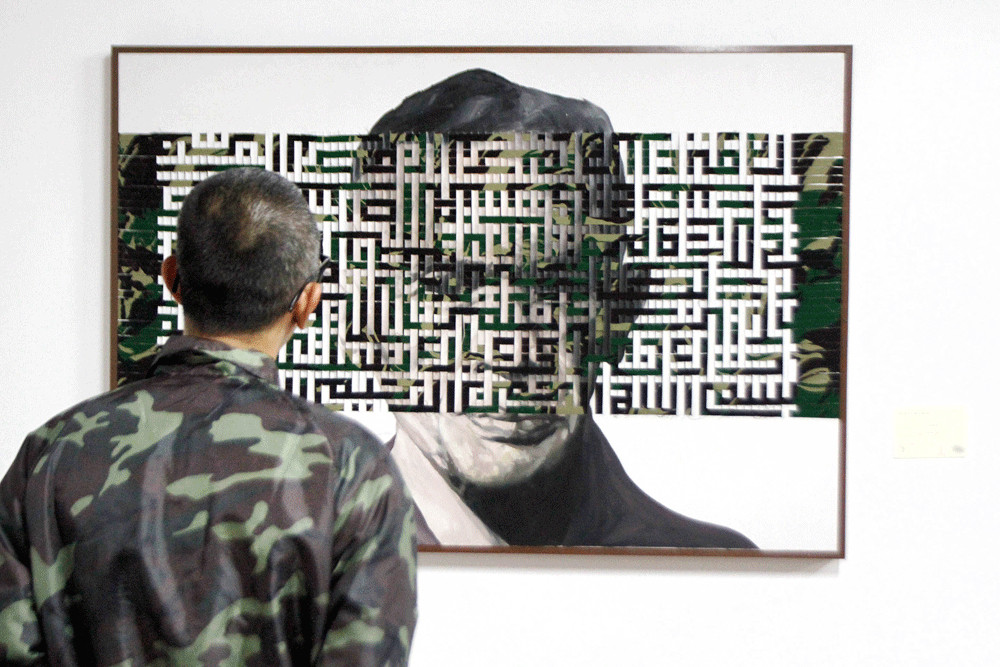Popular Reads
Top Results
Can't find what you're looking for?
View all search resultsPopular Reads
Top Results
Can't find what you're looking for?
View all search results'Art_Unltd' gives Bandung much-needed dose of fine art
Art_Unltd: “XYZ” showcases the works of more than 100 artists, mainly Bandung-based artists, at the Gas Negara Building from Dec. 15 to 20.
Change text size
Gift Premium Articles
to Anyone
O
ne of Indonesia’s modern art hubs, Bandung, is finally hosting a major art exhibition after more than a decade hiatus. Art_Unltd: “XYZ” showcases the works of more than 100 artists, mainly Bandung-based artists, at the Gas Negara Building from Dec. 15 to 20.
The event, organized by the Creative Economy Agency (Bekraf) and ArtSociates Indonesia, displays a wide range of fine art pieces, from paintings and statues to surfboards and mechanical installations.
Interestingly, Art_Unltd: “XYZ” offers more than just an exhibition, it also caters to visitors interested in learning about or purchasing the artworks.
Last Sunday, artist Henryette Louise spent the day answering visitors’ questions about artworks displayed in the Galeri Kertas exhibition area.
One university student, Tutun Turmudzi, had his interest piqued by Ugo Untoro’s Sleeping Buddha Series, which consists of three paintings, each showing a pair of feet.
“The exhibition triggered my curiosity. I want to know [...] what does the artist want to convey through his paintings?” Tutun asked.
Henryette was glad to answer Tutun’s question.
“Interactions like this should be incorporated into exhibitions,” Henryette said. “It gives people a chance to learn and know more about fine art.”
Also at the exhibition, seasoned artist John Martono presented The Soul of Happiness, a series of paintings embellished with handsewn silk thread. Meanwhile, contemporary artist Muhammad Akbar utilized ultra violet light to create a mesmerizing work titled Frog Eye.
The artistic team coordinator, Asmudjo J. Irianto, explained that the title of the exhibition Art_Unltd: “XYZ” referred to three branches of fine arts: fine art, applied art and craft — with the three able to intertwine with each other just like the X, Y and Z axes in mathematics.
The letters also represent three generations in the art scene. Generations Y and Z are the emerging artists, while the established artists belong to generation X.
Bandung is home to the country’s oldest fine arts school and has long been a base for many of the country’s leading artists, such as Sunaryo and Nyoman Nuarta. But when it comes to fine art events, Bandung still lags
behind.
Yogyakarta and Jakarta have successfully built their art markets through the Art Jog and Art Jakarta events that have been around for a decade. The two contemporary art exhibitions have become annual events, anticipated by artists and the general public alike.
“As far as I can remember, the last exhibition with such a concept was the Bandung Art Event in 2002. It’s been a long time since I’ve seen an exhibition like this,” said painter R.E. Hartanto, who participated in Art_Unltd: “XYZ”.
Bekraf marketing deputy director, Joshua Simanjuntak, expressed hope Art_Unltd: “XYZ” would open the eyes of the local government to the public’s desire for more fine art events.
“The public and the fine arts community need more exhibitions,” said Joshua.
Bekraf head Triawan Munaf noted there was ample room for the fine art market to grow.
According to data from Bekraf, fine arts ranked as the fourth-lowest contributor out of 16 subsectors in the creative economy in 2016. Fine arts contributed Rp 20.3 trillion (US$1.4 billion) in 2016, equaled to 0.22 percent of the creative economy’s gross domestic income.
“The fine arts subsector has the potential to have a great competitive edge both domestically and internationally,” said Triawan.
He suggested that one of the problems lay in the fine art market’s dependency on a small group of collectors and upper-class buyers.
“[Therefore] we will try to provide a platform for young artists so their artwork can be enjoyed by the public to expand the fine arts market,” said Triawan.
Jakarta-based artist Hanafi said the exhibition had provided a platform for new artists to shine.
“[My only issue] is with Bekraf’s point of view. It is better to not only see [the event] from a business standpoint,” he said.










